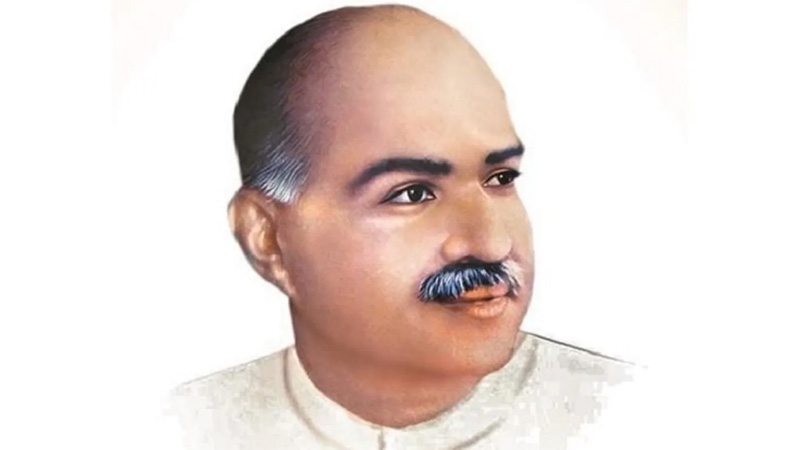One of the great architects of independent India, Dr. Syama Prasad Mookerjee, born on 6 July,1901 as the son of Sir Ashutosh Mookerjee, sacrificed his life for national unity and integrity. Dr. Mookerjee had a multifaceted personality. He was an academician, barrister, politician, and humanitarian par excellence—all in one. By dint of his hard work and academic excellence, he became the youngest vice chancellor of the University of Calcutta at the age of 33, perhaps the first in academic history.
As a student in college, his cherished the ambition to be a journalist but as time passed, he ended up jumping into politics to become a great political leader. He sacrificed his life for the complete integration of Jammu & Kashmir with India.
With his qualities of head and heart, Dr. Mookerjee attracted the attention of Mahatma Gandhi. The latter got so impressed by Dr. Mookerjee that when India became free on August 15, 1947, Mahatma Gandhi impressed upon Pandit Jawaharlal Nehru to include two, among others, in his first Cabinet formed after independence. One was Dr. Syama Prasad Mookerjee, and the other was Dr. B. R. Ambedkar. Interestingly, both were not members of the Congress Party. Pandit Nehru allocated Dr. Mookerjee the portfolio of commerce and industry. As a Minister in Nehru’s cabinet, he left his indelible imprint as the man who laid the sound foundation for the industrialization of the newly independent country. He sent the country on a rapid industrialization spree.
Despite his effectiveness as a minister, Dr. Mookerjee developed differences with Pandit Nehru over refugee problems, the handling of the Kashmir issue, and the treatment of minorities in the territories of Pakistan. As time went on, he realised that he could no longer serve in Nehru’s government and participate in the policies which, in his view, were not in the best interests of the country. Finally, he resigned from the cabinet on April 8, 1950.
After resigning from Nehru’s Cabinet, Dr. Syama Prasad Mookerjee, with the help of the RSS, founded ‘Jana Sangh’. On October 21st, the Jana Sangh was formally launched in New Delhi, and Dr. Mookerjee became its first President.
Dr. Mookerjee supported Praja Parishad`s satygarah against “do vidhan,do nishan aur do pradhan’. He took the issue to the people of the country. He organized public meetings across the country to garner support for Praja Parishad’s movement in Jammu & Kashmir. Dr. Mookerjee wanted to keep the movement non-violent. In order to assess the situation in Jammu & Kashmir Dr. Mookerjee decided to send Shri Uma Shankar Trivedi andShri GV Deshpandey to Jammu. But both were not granted permission to enter Jammu and Kashmir. At this point, Dr. Syama Prasad Mookerjee himself decided to go to Kashmir without seeking any clearance or permission.
Dr. Mookerjee commenced his journey from New Delhi for Jammu & Kashmir on May 8, 1953. On May 11 he reached Pathankot. His welcome in Pathankot was amazing. Dr. Mookerjee reached Madhopur check post at 4 PM.
As soon as the jeep carrying Dr. Mookerjee reached the middle of the Madhopur bridge he was stopped by Jammu & Kashmi police. Dr. Mookerjee along with his two colleagues Guru Dutt Vaidya and Tek Chand were arrested. They were told that they were being arrested under Public Safety Act of Jammu & Kashmir. Shri Atal Bihari Vajpayee who was travelling with him was asked by Dr. Mookerjee to go back and tell the people of the country that Dr. Mookerjee had entered the state of Jammu & Kashmir without a permit. Dr. Mookerjee was taken to Srinagar. After completing all legal formalities, he along with two others were kept under arrest for 42 days till his mysterious death on June 23,1953 at a cottage near the Nishat Garden. Since then, his death anniversary is observed as ‘Balidan Diwas’.
The unfinished task of Dr. Mookerjee was completed by Prime Minister Shri Narendra Modi by repealing article 370 on August 5,2019.


